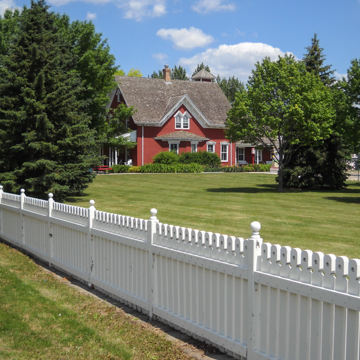You are here
Fargo Children’s Museum (Yunker Farm, Newton Whitman Farm)
Fargo’s Park Board has used excellent creative judgment in planning for preservation and future use of several unusual properties under their control, including Rheault Farm (1919; 2902 25th Street SW) in south Fargo, Edgewood Chalet (1932; 19 Golf Course Drive N; see CS45), and Yunker Farm. The Yunker farmhouse was reportedly the first brick house built in Dakota Territory, although the James Holes House (1879; 1230 5th Street N) dates from about the same time. The Whitman family raised livestock and grain on the surrounding land until the house was sold to the Yunker family in 1905. Today, a children’s museum is located in this house, offering science and learning activities as well as youth recreation. The Fargo Children’s Museum began in 1985 as a project of the Junior League of Fargo/Moorhead and the Fargo Park District. Recent site features include an emerging arboretum and a Japanese garden, augmenting the widely varied programs of the museum.
Writing Credits
If SAH Archipedia has been useful to you, please consider supporting it.
SAH Archipedia tells the story of the United States through its buildings, landscapes, and cities. This freely available resource empowers the public with authoritative knowledge that deepens their understanding and appreciation of the built environment. But the Society of Architectural Historians, which created SAH Archipedia with University of Virginia Press, needs your support to maintain the high-caliber research, writing, photography, cartography, editing, design, and programming that make SAH Archipedia a trusted online resource available to all who value the history of place, heritage tourism, and learning.









